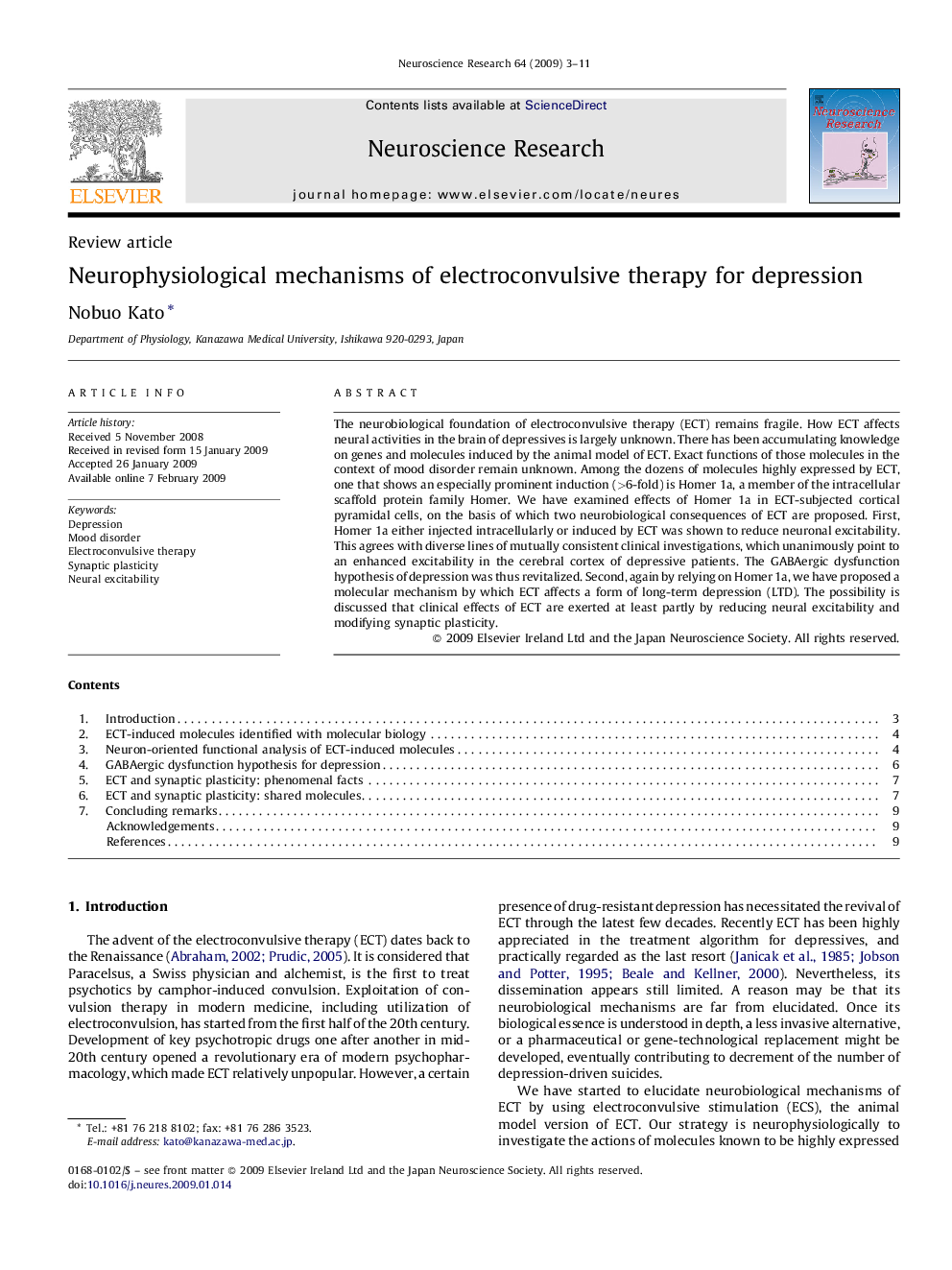| Article ID | Journal | Published Year | Pages | File Type |
|---|---|---|---|---|
| 4352380 | Neuroscience Research | 2009 | 9 Pages |
The neurobiological foundation of electroconvulsive therapy (ECT) remains fragile. How ECT affects neural activities in the brain of depressives is largely unknown. There has been accumulating knowledge on genes and molecules induced by the animal model of ECT. Exact functions of those molecules in the context of mood disorder remain unknown. Among the dozens of molecules highly expressed by ECT, one that shows an especially prominent induction (>6-fold) is Homer 1a, a member of the intracellular scaffold protein family Homer. We have examined effects of Homer 1a in ECT-subjected cortical pyramidal cells, on the basis of which two neurobiological consequences of ECT are proposed. First, Homer 1a either injected intracellularly or induced by ECT was shown to reduce neuronal excitability. This agrees with diverse lines of mutually consistent clinical investigations, which unanimously point to an enhanced excitability in the cerebral cortex of depressive patients. The GABAergic dysfunction hypothesis of depression was thus revitalized. Second, again by relying on Homer 1a, we have proposed a molecular mechanism by which ECT affects a form of long-term depression (LTD). The possibility is discussed that clinical effects of ECT are exerted at least partly by reducing neural excitability and modifying synaptic plasticity.
